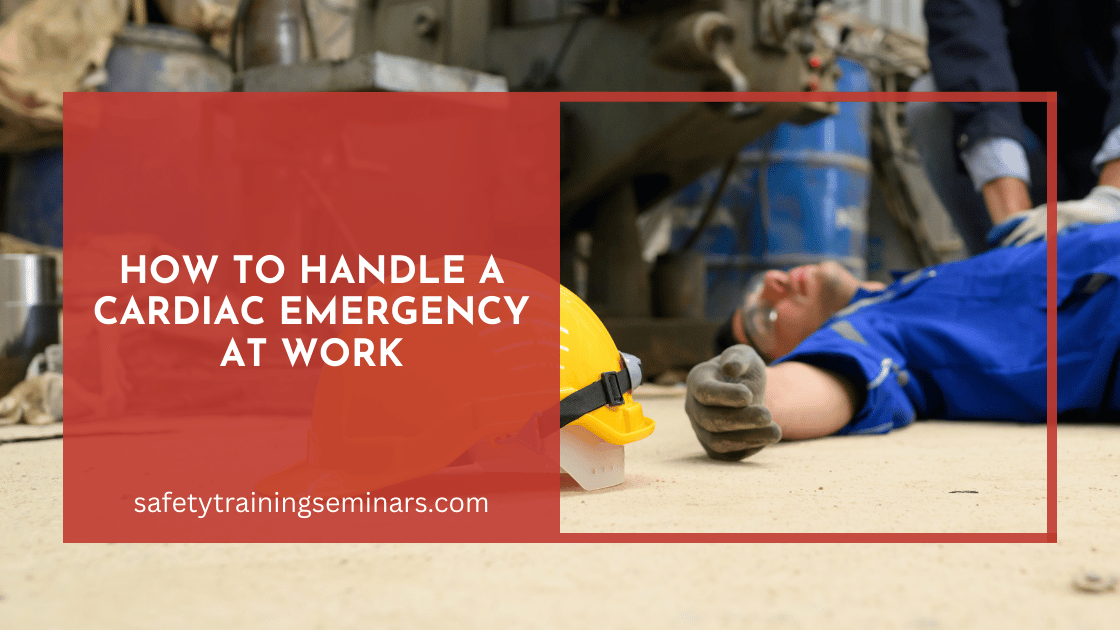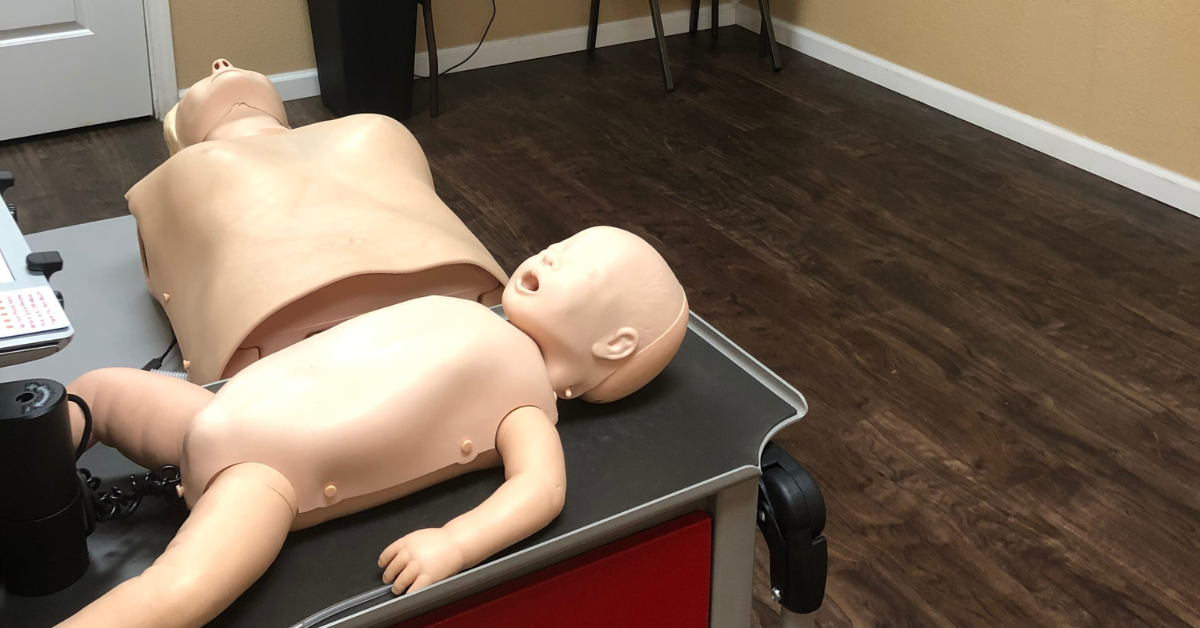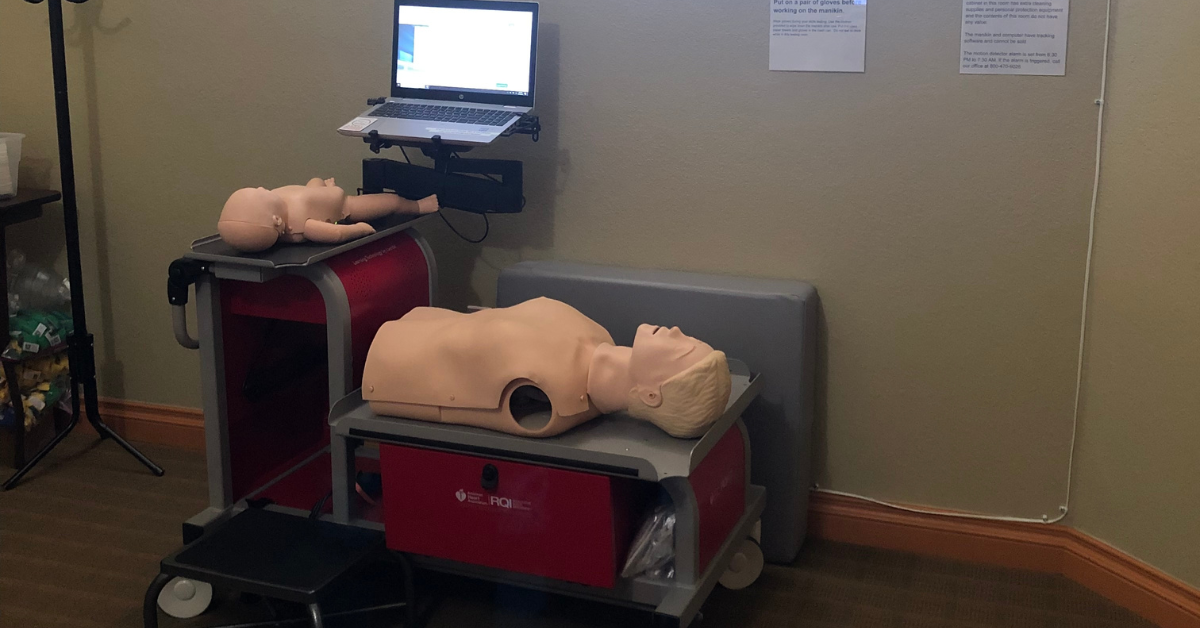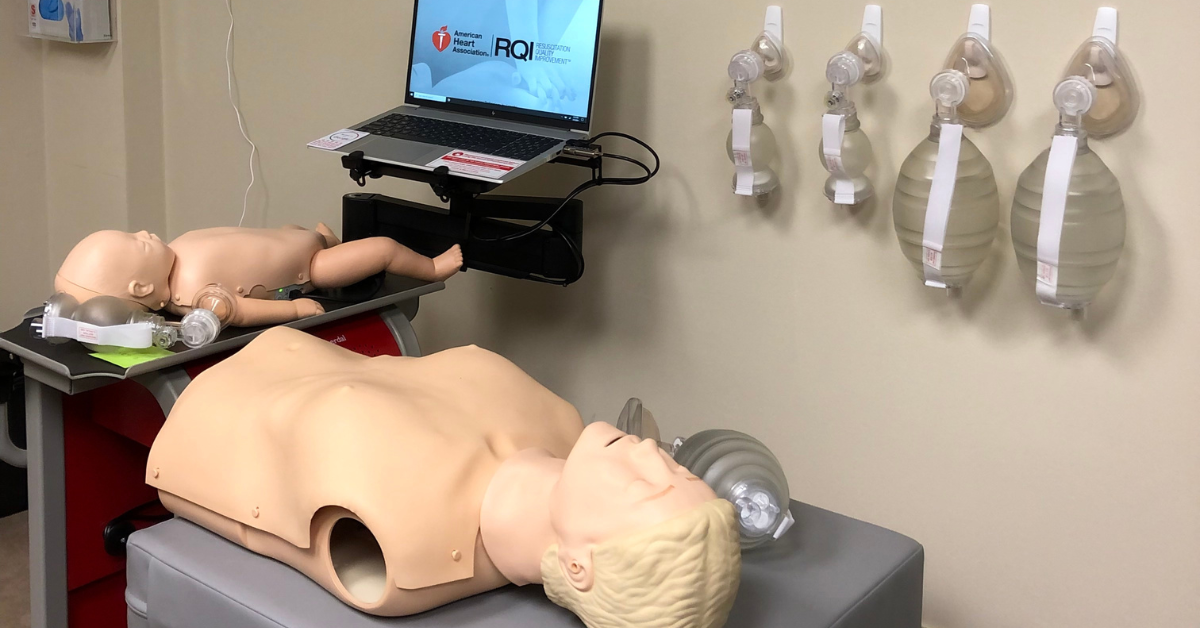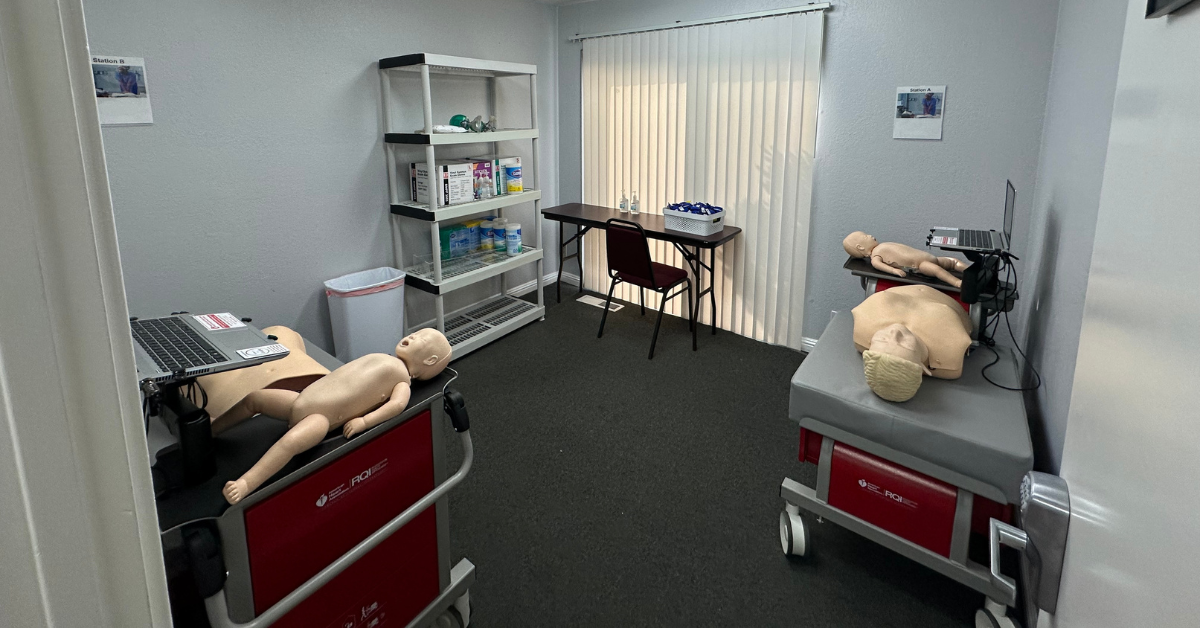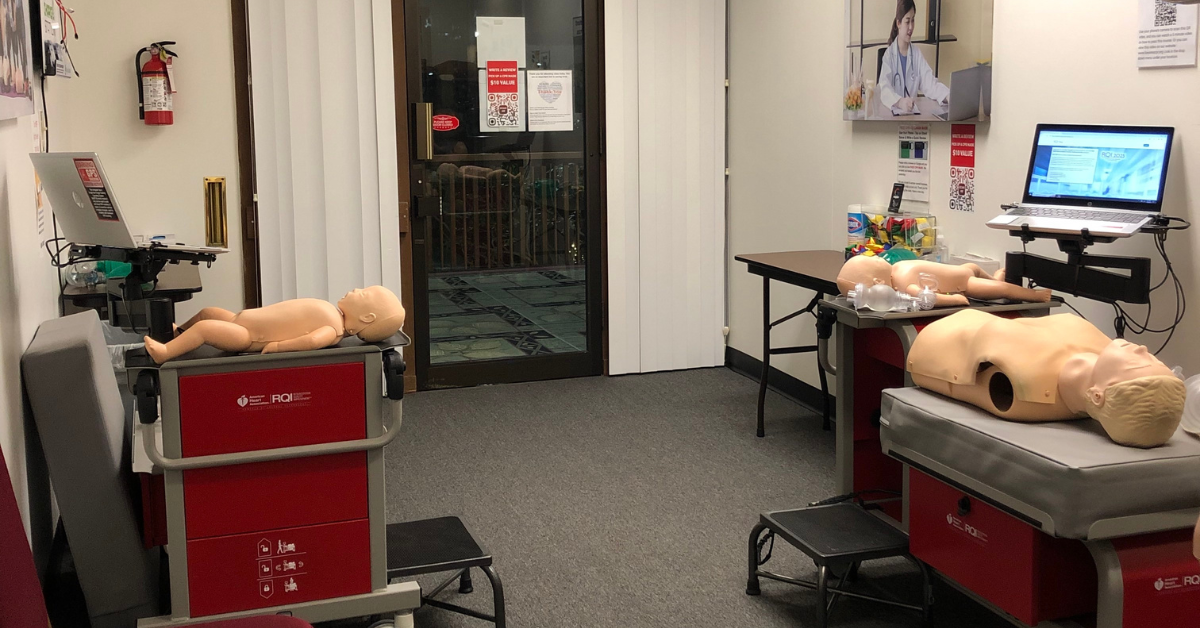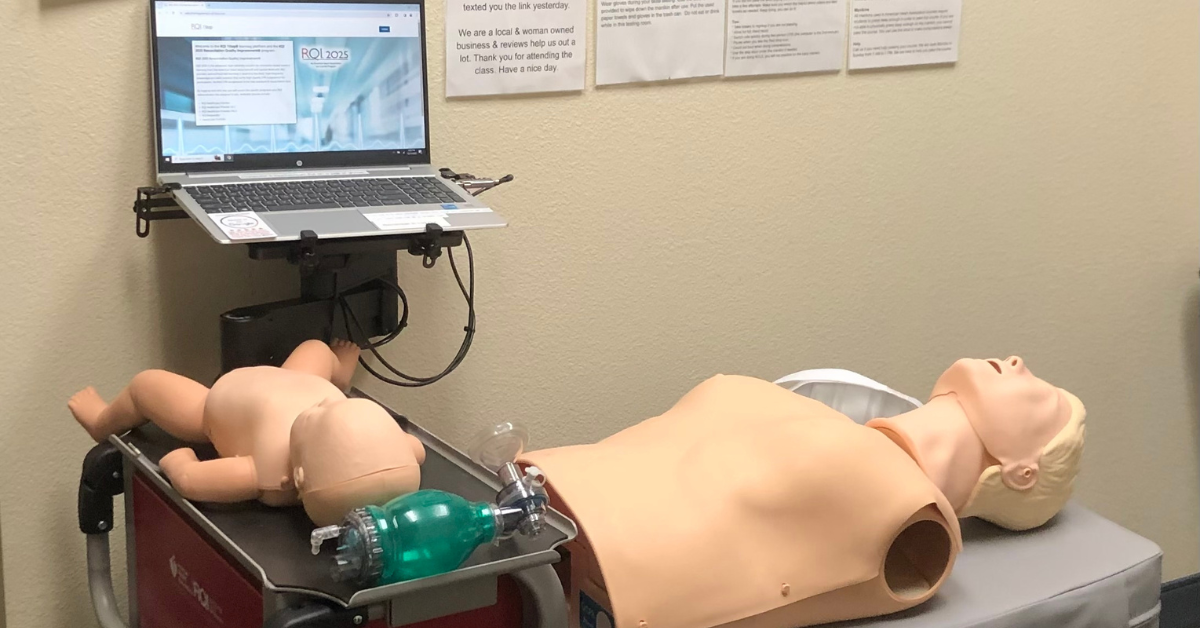A cardiac emergency can happen anywhere, anytime—including at your workplace. When someone collapses from sudden cardiac arrest, you have about 10 minutes to act before brain damage becomes irreversible. The difference between life and death often depends on whether someone nearby knows how to respond quickly and effectively.
Every year, approximately 356,000 out-of-hospital cardiac arrests occur in the United States. Many of these happen in workplaces, where trained individuals can make the crucial difference. The survival rate for sudden cardiac arrest is only about 10% nationally, but it jumps dramatically when immediate CPR and defibrillation are provided.
We’ve seen firsthand how proper training transforms ordinary employees into life-savers. Through our American Heart Association training programs, we’ve watched countless individuals gain the confidence and skills needed to handle these critical moments. This guide will walk you through the essential steps for managing a cardiac emergency at work, from recognizing the signs to performing life-saving interventions.
Recognizing a Cardiac Emergency
Time is everything during a cardiac emergency. The faster you recognize the situation, the sooner you can begin life-saving measures.
Signs of Sudden Cardiac Arrest
Look for these immediate warning signs:
- Person suddenly collapses or becomes unresponsive
- No normal breathing (gasping doesn’t count as normal breathing)
- No pulse (if you’re trained to check)
- Skin turns blue or gray, especially around lips and fingernails
- No response to verbal commands or physical stimulation
Heart Attack vs. Cardiac Arrest
Don’t confuse a heart attack with cardiac arrest. A heart attack occurs when blood flow to the heart is blocked, but the person usually remains conscious. Cardiac arrest happens when the heart stops beating effectively, causing immediate unconsciousness.
Heart attack symptoms include:
- Chest pain or discomfort
- Shortness of breath
- Nausea or lightheadedness
- Pain in arms, neck, jaw, or back
Both situations require immediate emergency response, but the treatment approaches differ significantly.
The Critical First Steps
When you encounter a potential cardiac emergency, follow these immediate actions:
Step 1: Ensure Scene Safety
Before approaching the victim, quickly scan for hazards. Look for electrical wires, fire, toxic fumes, or unstable structures. You can’t help anyone if you become a victim yourself.
Step 2: Check Responsiveness
Tap the person’s shoulders firmly and shout “Are you okay?” If there’s no response, the situation is critical.
Step 3: Call for Help Immediately
Call 911 right away. If others are present, point to a specific person and say “You, call 911 now.” This prevents the bystander effect where everyone assumes someone else will act.
Step 4: Look for an AED
Send someone to locate the nearest Automated External Defibrillator (AED). Many workplaces are required to have these devices, and they can restore a normal heart rhythm when used quickly.
Performing CPR: The Life-Saving Technique
CPR (Cardiopulmonary Resuscitation) keeps blood flowing to vital organs until professional help arrives. Here’s how to perform high-quality CPR:
Hand Placement
Place the heel of one hand on the center of the chest, between the nipples. Place your other hand on top, interlacing your fingers. Keep your arms straight and shoulders directly over your hands.
Compression Technique
Push hard and fast at least 2 inches deep for adults. Allow complete chest recoil between compressions. Aim for a rate of 100-120 compressions per minute—think of the beat of “Stayin’ Alive” by the Bee Gees.
The 30:2 Ratio
Perform 30 chest compressions followed by 2 rescue breaths. Tilt the head back slightly, lift the chin, and give breaths that make the chest rise. Continue this cycle until emergency services arrive or an AED becomes available.
Don’t Stop
Quality CPR is exhausting. Switch with another trained person every 2 minutes to maintain effective compressions. Minimize interruptions—every second counts.
Using an AED Effectively
An AED can be the difference between life and death. These devices are designed for use by non-medical personnel and provide voice prompts to guide you through the process.
AED Steps
- Turn on the AED and follow voice prompts
- Attach electrode pads as shown in the diagrams
- Ensure no one is touching the victim when the AED analyzes
- If a shock is advised, make sure everyone is clear and press the shock button
- Immediately resume CPR after the shock
AED Safety
Never use an AED on someone who is conscious or breathing normally. Remove any medication patches from the chest area before applying electrodes. If the victim is lying in water, move them to a dry area first.
Team Response and Communication
Effective emergency response requires coordination. Designate specific roles:
The Team Leader
One person should take charge of CPR and coordinate the response. This person communicates with 911 dispatchers and directs others.
The AED Operator
A second person should focus solely on retrieving and operating the AED. They should be prepared to switch roles with the CPR provider to prevent fatigue.
The Communicator
Someone should remain on the phone with emergency services, providing updates and receiving instructions. They should also clear pathways for emergency responders.
Creating a Workplace Emergency Action Plan
Every workplace should have a cardiac emergency response plan. We help organizations develop these comprehensive strategies through our training programs.
Essential Plan Elements
- Clear chain of command for emergency situations
- Location of all AEDs and first aid supplies
- Designated employees trained in CPR and AED use
- Regular practice drills and equipment checks
- Contact information for local emergency services
Training Requirements
Consider which employees should receive training. While everyone can benefit from basic CPR knowledge, focus on:
- Security personnel and supervisors
- Employees who work in high-risk areas
- Staff members who are often present during all shifts
- Volunteers who express interest in emergency response
When Professional Help Arrives
Continue CPR until emergency medical services (EMS) take over. Provide them with key information:
- How long the person was unresponsive
- When CPR was started
- Number of AED shocks delivered
- Any known medical conditions or medications
- Circumstances leading to the collapse
Don’t stop CPR just because EMS arrives on scene. They may need a moment to set up their equipment, and continuous chest compressions are crucial.
Building Workplace Readiness Through Proper Training
Knowledge without hands-on practice isn’t enough during a real emergency. Proper certification ensures you can perform these skills confidently when lives are on the line.
At Safety Training Seminars, we provide comprehensive American Heart Association training that prepares employees for these critical moments. Our programs include:
BLS (Basic Life Support) for Medical Professionals
Our BLS certification covers high-quality CPR, AED use, and team dynamics. Perfect for healthcare workers, the program includes online coursework (1-2 hours) followed by hands-on skills testing (30 minutes). You receive your AHA card the same day.
Heartsaver CPR and First Aid for General Employees
Designed for the general public, this program teaches CPR for all age groups, AED operation, and basic first aid skills. The combination of online learning (1-2 hours) and practical skills assessment (30-45 minutes) ensures comprehensive preparation.
Advanced Training Options
For organizations with specific needs, we offer ACLS (Advanced Cardiovascular Life Support) and PALS (Pediatric Advanced Life Support) training. These programs prepare participants for complex cardiac emergencies and pediatric situations.
As an official American Heart Association Training Center, we guarantee quality instruction and same-day certification. Our 70+ California locations and daily class schedule make training accessible for busy professionals. With thousands of five-star reviews and a 100% pass rate guarantee, we ensure your team receives the best possible preparation.
Taking Action to Save Lives
Cardiac emergencies don’t wait for convenient times or perfect conditions. They happen suddenly, often without warning, in ordinary workplaces filled with ordinary people. The difference between tragedy and survival frequently comes down to one factor: preparation.
Your workplace can become a place where lives are saved rather than lost. The investment in proper training pays dividends that can’t be measured in dollars—they’re measured in lives, families kept whole, and communities that are stronger because people like you chose to be prepared.
Don’t wait for an emergency to realize the importance of these skills. Every day you delay training is another day your workplace remains vulnerable. Contact Safety Training Seminars today to schedule American Heart Association certification for your team. With our low price guarantee, same-day certification, and convenient locations throughout California, there’s no reason to postpone this critical preparation.
Visit our website to view upcoming courses, or call us at 800-470-9026 to discuss group training options for your organization. When a cardiac emergency strikes your workplace, you’ll be ready to respond with confidence and skill.
Whether you’re new to CPR or looking to refresh your skills, taking part in CPR Classes in Northern California is a great way to stay prepared. These programs often mirror the high-quality instruction found in BLS CPR Classes in San Jose, equipping participants with the confidence to respond in real emergencies.


